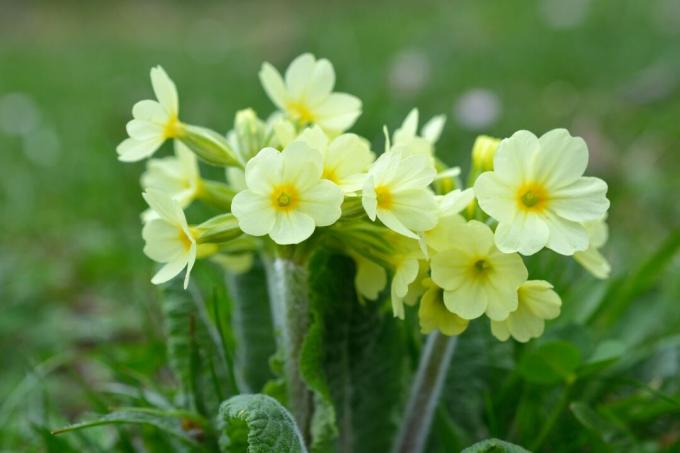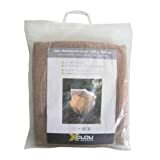In spring, primroses shine brightly in the garden. But extreme frost can cause problems for the primroses. This is how you protect the spring bloomers.

primroses (Primula) usually invite as decoration in small pots in front of the front door or let your home bloom from February. But even if it seems as if the primrose from the supermarket and hardware store is only a disposable item, very few primula species are annuals. Once planted in the garden, they bloom year after year. The colorful early bloomers feel at home throughout the northern hemisphere and only a few sensitive species need light protection in winter. But with long periods of frost, every primrose needs a little care to survive the winter unscathed.
Primroses: when does frost cause damage?
When frost causes damage depends on the primrose species. Most of the varieties available here are hardy and last like the cushion primrose (
Primula acaulis) sometimes minus degrees. Other species such as the cup primrose (Primula obconica) have to move to a sheltered place immediately in case of frost. If the primula has had too much frost, the leaves will turn brown and die.
Protect primroses in the bed from frost
In the bed, the plants are quite frost hardy. However, primroses should be covered during longer periods of frost below -5°C. A layer of brushwood, leaves, moss, bark mulch or spruce branches is suitable for this. Alternatively, you can dig up the primroses, plant them in a pot and overwinter at home or in the gazebo. The following must be observed here:
- Cool but frost-free location (3 °C - 10 °C)
- Don't fertilize
- Water regularly and moderately
- Thermal garden fleece: Optimal to protect your plants from cold and frost in winter. Can be cut individually.
- Jute sack/blanket: Reliable protection against cold and frost made from 100% jute. Decorative natural fabric with a long service life.
- coconut mat: Excellent thermal retention made of natural fiber. Breathable, weather-resistant and durable.

Garden fleece, frost protection, growth-promoting microclimate
4,49€
Details →

Jute protective fleece made of 100% jute fibers, approx. 105x500cm
11,03€11,01€
Details →
- 30%

Coconut felt mat, cold protection 0.5 x 1.5 m, brown,
9,99€6,95€
Details →
Protect primroses in the pot from frost
If there is a slight frost, it is sufficient to wrap the primula in some newspaper. At temperatures from -5 °C, however, you should place the pot with the plant in a cool, frost-free place such as the basement or the stairwell. Mug Primroses (Primula obconica) are not frost-proof and should be placed in a sheltered place. The same points must be observed as for "Protect primroses in beds from frost".
Did you know that there are over 500 different types of primula? With this amount it is hardly possible to keep track. We present you with a few particularly beautiful ones Primrose species in front.
